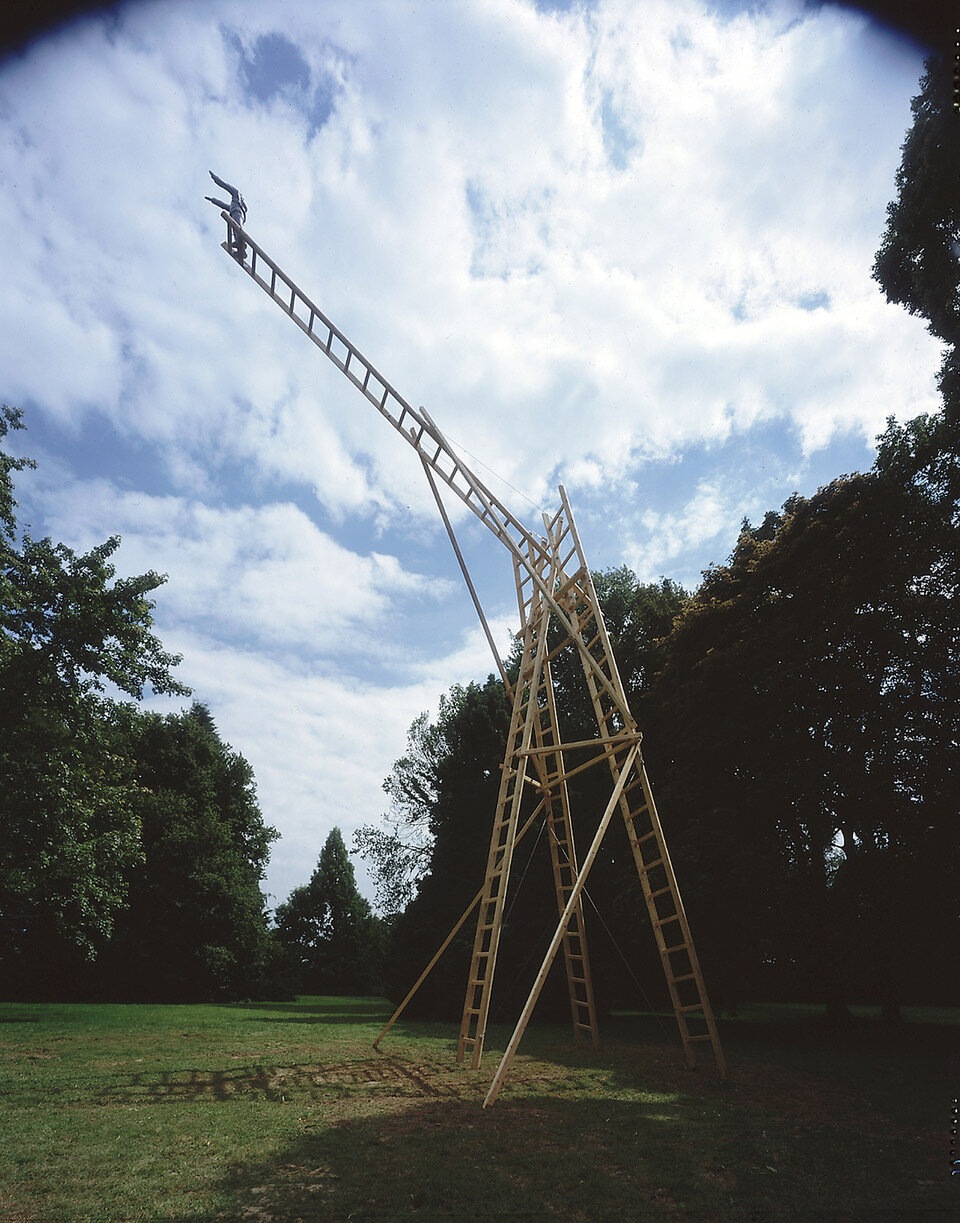ilya and emilia kabakov in conversation
with executive director peter doroshenko
Portrait by Jason Schmidt
Is it possible for you and Ilya to get work done during the coronavirus pandemic?
Somehow it’s even better. Artists have to be depressed to produce their great works. At this time, the concentration is stronger, you finally have time for yourself and can reflect on your work, your life and the world around you.
Does literature or music influence your current thinking?
Depends on what you read and the kind of music you listen to. And of course, the news you happen to have on that day.
How have Ilya’s paintings evolved in the past two years? Always pushing conceptualism to the edge of what is possible?
Strangely enough he is disappearing into his paintings now. The Museum of Modern Art owns an installation: The Man Who Disappear Into His Painting. So, I have to check on him a few times a day that he is still physically present in his studio and not inside one of his painting. The new concept is - painting inside the painting and details we will reveal at the exhibition at Dallas Contemporary.
What has been the underlying story of your recent museum installations and exhibitions?
That’s a complicated question. It’s always about a person who is trying to find the other reality or wishing to disappear into a fantasy. Someone who is scared of real world and doesn't know how to deal with everyday problems and situations. Yet, since they are a dreamer, an artist, they create a world of paintings, installations, drawings, sculptures. That’s ultimately what saves us and our viewers. It’s as if we really know how to meet an angel, how to heal with memories or paintings, how to fly and so forth. We create an artist’s world for viewers to step into and discover that they can live there.
When do you both find “quiet time” to talk and think?
Time is all that what we have now - a lot of it. we use it to read, to think, to talk. I don't remember who said this: great minds discuss ideas, average minds discuss events, small minds discuss people. Guess how we are trying to spend our free time?
The Deserted School Or School #6.01, 1993. Installation view, The Chinati Foundation, Marfa, Texas. Mixed media. Photography: Todd Eberle.
He Never Come Back, 2019. Oil on canvas.
Dark Painting With Cuts # 3 Triptych, 2010. Oil on canvas.
Three Fragments, 2019. Oil on canvas.
The Three Milkmen #2, 2020. Oil on canvas.
The Deserted School Or School #6.02, 1993. Installation view, The Chinati Foundation, Marfa, Texas. Mixed media. Photography: Todd Eberle.
Ilya Kabakov. Portrait, 2020. Photography: E.K.
In the Store, 2004. Oil on canvas.
Two Fragments, 2019. Oil on canvas.
How To Meet Angel .01, 2003. Installation view, Villa Böckel Park, Rödinghausen, Bielefeld, Germany. Photography: Nic Tenniggenhors.
about ilya and emilia kabakov
Ilya and Emilia Kabakov are amongst the most celebrated artists of their generation, widely known as pioneers of conceptual painting and installation art.
Ilya Kabakov was born in 1933 in Dnepropetrovsk (now Dnipro) in Ukraine formerly part of the Soviet Union. He studied at the Art School of Moscow, and the later at the V.I Surikov Art Institute.
Artists in the Soviet Union were obliged to follow the officially approved style, Socialist Realism. Wanting to retain his independence, Ilya supported himself as a children’s book illustrator from 1955 to 1987, while continuing to make his own paintings and drawings. As an ‘unofficial artist’, he worked in the privacy of his Moscow attic studio, showing his art only to a close circle of artists and intellectuals.
Ilya was not permitted to travel outside the Soviet Union until 1987, when he was offered a fellowship at the Graz Kunstverein, Austria. The following year he visited New York and resumed contact with Emilia Lekach. Born in 1945, Emilia trained as a classical pianist at Music College in Irkutsk, and studied Spanish Language and Literature at Moscow University before emigrating to the United States in 1973. Ilya and Emilia began their artistic partnership in the late 1980s, and were married in 1992. Together, they have produced a profile output of immersive installations and other conceptual works addressing ideas of utopia, dreams, and fear, to reflect on the universal human condition.
Ilya and Emilia Kabakov have collaborated together since 1989.











